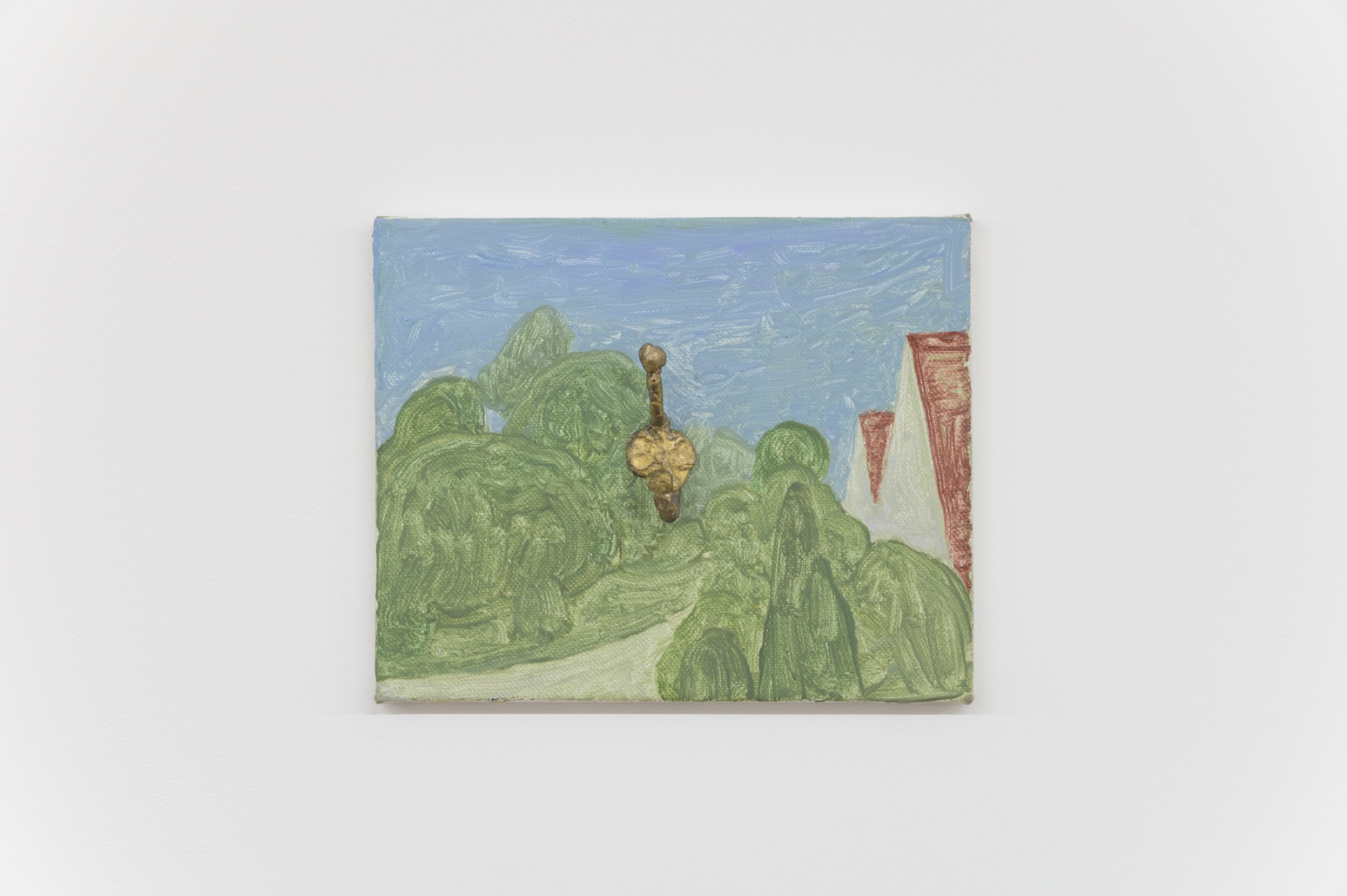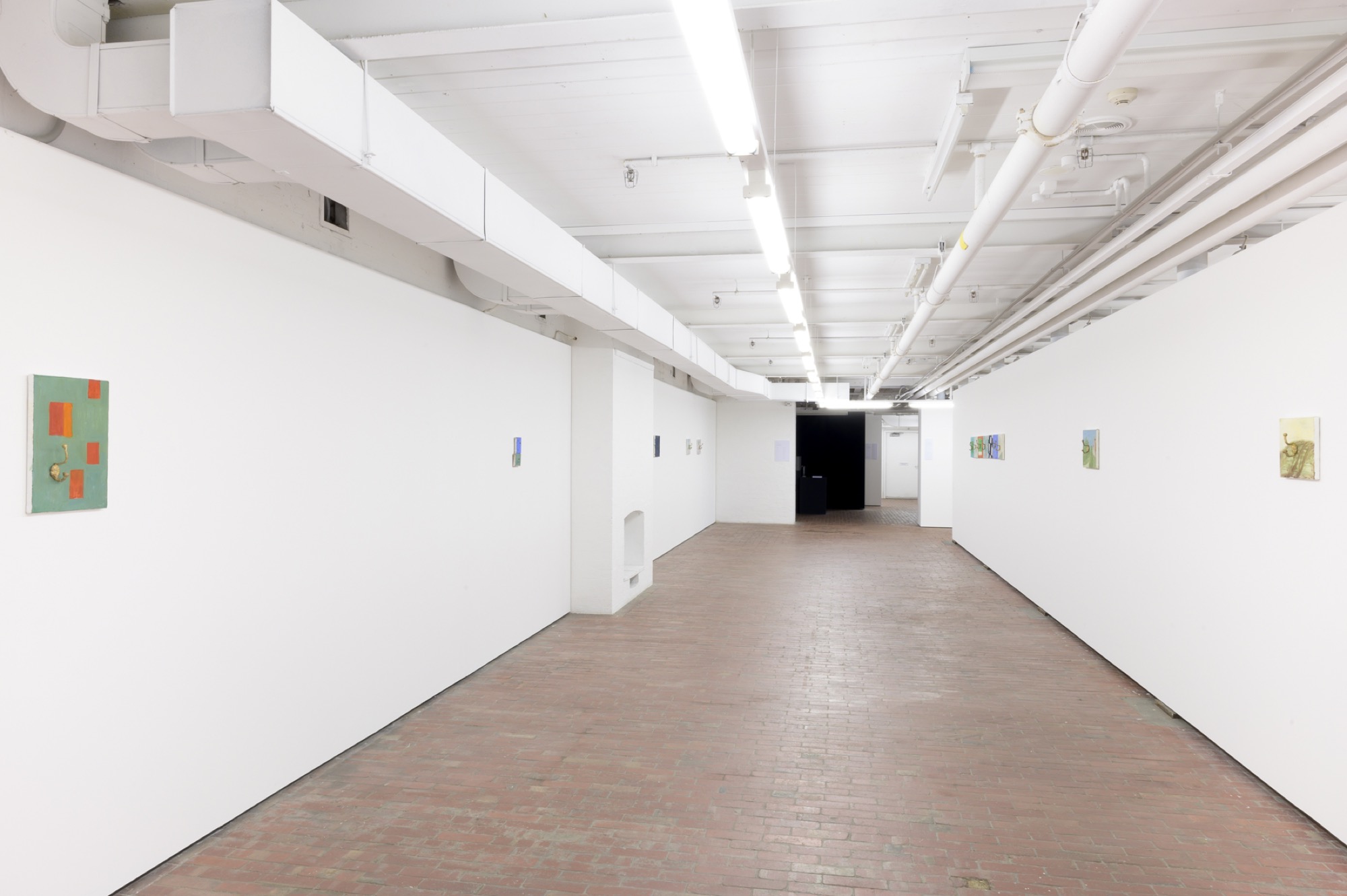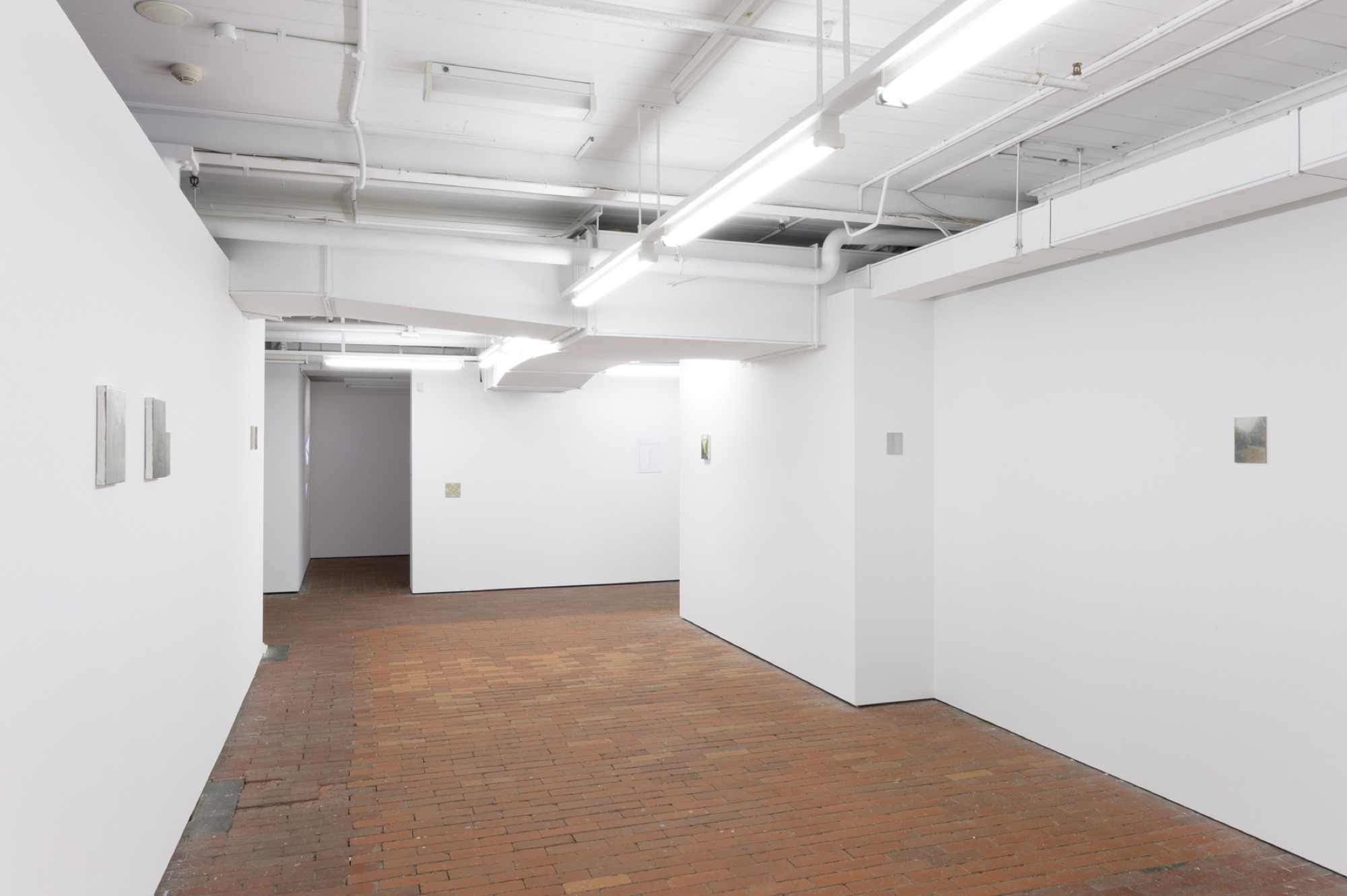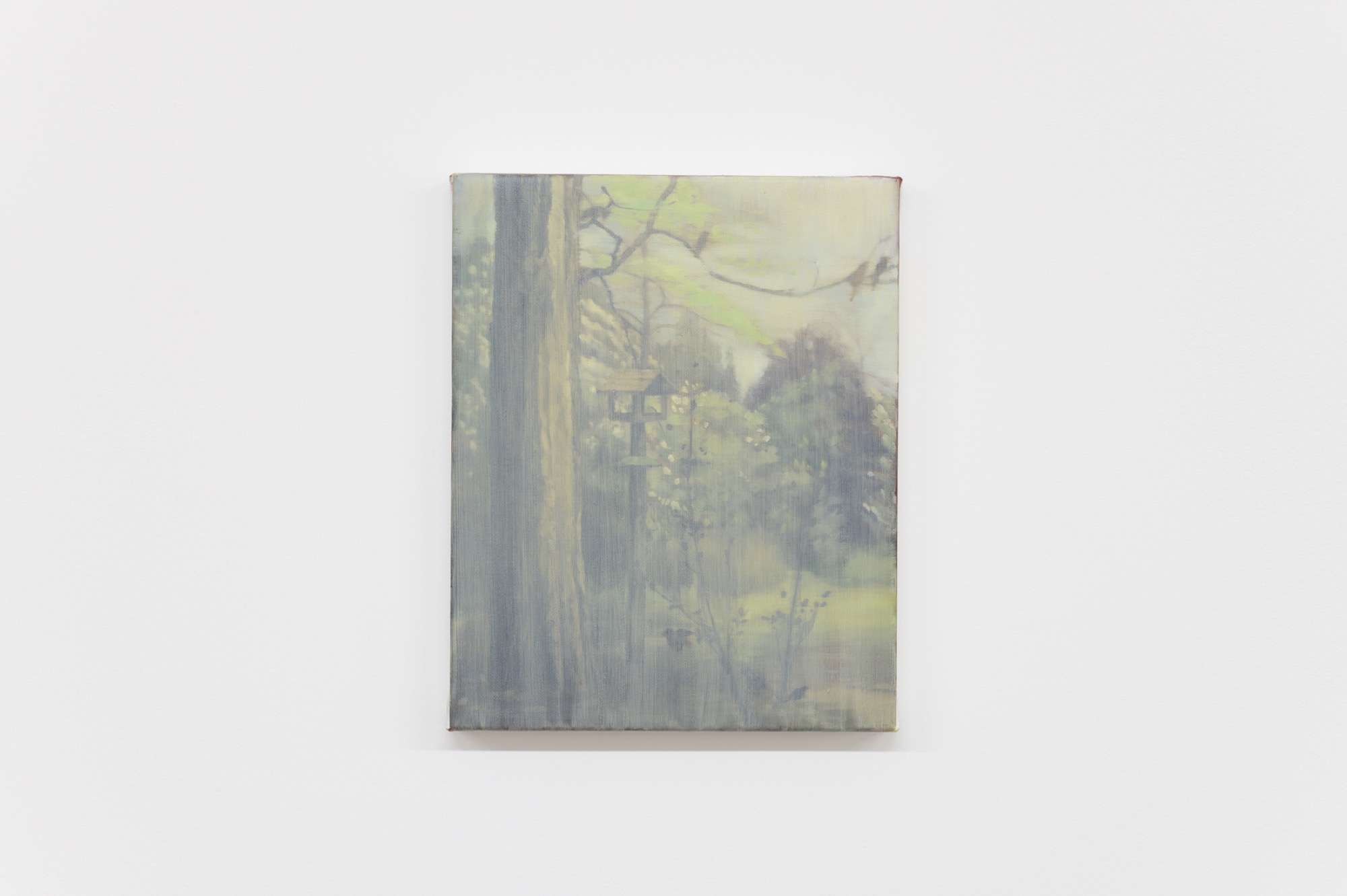Kate Wallace, Views to Remember; Travis MacDonald, Clock Face
Giles Fielke
Not without irony did the late Annette Michelson, writing for the New York Herald Tribune in 1957, note for her American readers that the art of the modernist avant-gardes had become traditional. This she had concluded from her viewing of a set of Robert Delaunay's rhythmic abstract paintings, shown retrospectively in a post-war and post-occupation Paris. Read today, Michelson's statement about the repetitive tonalism of the Orphic abstractionist seems to predict the coming implications for generations of painters responding to modernism and locates a problem for how we might understand the work of art for some time. According to the martial logic of historical progessivism, painting was now in crisis with itself.
The growing notion of art within a global contemporaneity, arriving about the time of Michelson's review (and the first NATO summit), has since attempted to slap a band-aid over this historical graze on the knee of Frankenstein's monster. But any accident is also an event, and our modern Prometheus has given us far more than what he bargained with the gods for. The solution proposed to suture this wound with “more art!” has only accelerated a situation that ends in performance. This response to modernism—to expand the arts, much like human rights—has produced the counter-effect of leading to their reduction. Today it seems as if the idea of a yawning gulf between what constitutes novelty and tradition is not really a gulf at all, rather it appears as the plane upon which competing ideas of modernity duel for ritualised supremacy.

All this may seem a somewhat unnecessarily grand way to begin a review of two exhibitions of recent paintings by two artists from Melbourne. But a historical narrative is all that is missing from these brilliantly presented exhibits. How did I get here? Kate Wallace premises her work on the possibility of memory, showing thirteen paintings as 'Views to remember'. All of the works are in oil on either board, linen or (most intriguingly) copper. Travis MacDonald's show, 'Clock Face', presents fifteen new works, all oils on linen, that also feature bronze-aluminium alloy adornments either taking the form of clothing hooks or the tops of rounded tacks, making them somewhat sculptural in appearance. Both artists use photography to inform their painting practice.
I have chosen to discuss just two of the six exhibitions concurrently on view at c3, and there are four other exhibitions of new work running alongside those by Wallace and MacDonald. They are by Ceri Hann, Andrea Eckersley, a collaborative and ongoing project between Eugene Perepletchikov and Georgia Nowak, and an expanded painting installation by Emanuel Rodriguez-Chaves. I have chosen Wallace and MacDonald's shows because they are about painting and also about the history of painting in the same way that Rodriquez-Chaves' works are not. They have studied the tradition and its crisis. They also seem, at first glance, to be more concerned with tone than iconography, despite the figurative and discernible reference in MacDonald's title to one work in particular: the clock. This oscillation between abstraction and figuration is further suggested by the reference to the cartoon of time seized on by Philip Guston, in his works from the late 1960s and 70s.

Both Wallace and MacDonald are classifiably 'young' painters and are both showing a suite of new works following 'bigger' solo shows they've held in the past few years. Suitably, then, both exhibit works here that are relatively small in scale and, at least initially, share the sense that these works are humble, or even modest in their intents. But their smallness is subterfuge. Within the tiny, low-roofed galleries they command their space and grow as they draw the viewer into them.
c3 is located at the threshold of the city in the Abbotsford Convent complex, which is situated on the banks of the Yarra river, near the confluence of the Merri Creek at Dights Falls. The Convent is now a rehabilitated space, in that it is a location that attracts regular pilgrimage for those seeking some kind of refuge from the city, perhaps cheap (or free) food at Lentil As Anything—especially after Rainbow Serpent. It is not surprising that many artists have also found a space to work here, and there are a number of studios in the creaky old complex of rooms and halls that provide a space for artists to work in exception to the usual model of the over-priced, subdivided warehouse.
At the Convent this newfound purpose masks a despicable history of forced labour. Orphaned girls or women who were deemed to require 'protection', were taken here by the state for the Catholic church to work them for their troubles. Furthermore, as a church site it is a typical colonial monument designed to obliterate meaning for the previously existing population. The confluence of the Yarra and the Merri is significant for the Wurundjeri, situated beneath the gently sloping hills that now lead up to Kew (and firstly to Raheen, the former home of the Archbishop of Melbourne, and now the home of our Archbishop of Capitalism).

In the gallery, Wallace's paintings are carefully arranged according to a set of standard sizes—stretched linen, board, or copper—yet they differ even as they repeat their contents. One repeated 'view' is titled The outside in, which is meticulously reproduced and the two works are hung side by side. It took me multiple viewings to realise this. The same sub-aqueous garden appears twice. So taken was I with the idea of oil painted onto copper that I didn't notice the second, larger iteration to its immediate left.
Another double, Floor detail, has been installed with the second work inverted. Other works appear on their own, like Corner #2, its title gesturing to the motif that we can imagine Wallace has repeated elsewhere but not selected for exhibition. The effect of Corner #2, as a domestic abstraction, does not seem to about the phenomenological encounter in space, or the experience of a free-floating form abstracted from its surface, as is often the case with older works by Dale Hickey of Robert Hunter. Rather Corner is simply a partial view of a larger interior. Psychic space is conjured with the faintest shade, and the simplest line. Painting here is a process for inscribing this space into a memory object, externalising it like a clue to some complex game missing its guidelines. The ambiguity of this relationship to the larger set of works is not clear, but it opens the viewer to something that is uncanny in a way only painting can be.

In the next room, MacDonald's installation disperses a slightly larger number of works around a central line of seven panels. Like a week's worth of work, this group of paintings end with the aforementioned clock appearing from behind a hillock in the sky. In its centre is a hook instead of hands, which gleams strangely in its experimental alloy of the two metals, bronze and aluminium.
MacDonald's work has often included larger bronze sculptures in addition to the paintings hung on the wall. That he has access to a foundry in Elphinstone makes the playful addition of this small series of hooks all the more intriguing as they have been produced in series. Yet the casual nature of the compositions coupled with the centrally installed hooks lends the whole show the air of a schoolyard prank. This playfulness is at odds, of course, with the studied effects of colour and the closely rendered mounds that appear in the vernacular of Giorgio Morandi's still lives (perhaps if he'd been more of a stumblebum and less of a mandarin). The tiny metal traces appear like drops in a constellation of tacked stars, across scumbled surfaces that are all about the pleasure of impasto paint—they indulge in their palette yet still feel patchy from stop to stop. Nothing is quite satisfied in MacDonald's work: any victory feels empty, or otherwise attained by deception.

In the past decade local painters like Helen Johnson, Kate Smith, Trevelyan Clay and Matlock Griffiths have led the way for a generation of painters emerging from Melbourne. Following in their wake, painters like Hamishi Farah (now retired from Australian art), Oscar Perry, Lucina Lane, Zac Segbedzi, Renee Cosgrave, Josie Kidd-Crow and Tim Bučković could also be grouped into a kind of school with others like Wallace and MacDonald. However awkwardly they could be seen to fit, one concern is clear: tonalism emerges triumphant over the figures depicted. In the artists' canon, Clarice Beckett was our greatest painter. In MacDonald's case this only matters because the indiscernible scenes coalesce into the combination of its elements, like one of Beckett's railway crossings: the green that hosts the pliant gold-alloy could be a wattle or a phony car part. For Wallace it is the thin glaze that prevents our clear view of a bird house, returning us to the canvas or copper of the work's ground.
What MacDonald shares with painters like Clay and Kidd-Crow is their early career representation by some of Melbourne's more established commercial galleries—in MacDonald's case Niagara, which has run annual 'Blue Chip' shows since it opened in 1978. This establishment representation is the rupture between both painter's works in the adjacent c3 galleries. MacDonald's work is modulated by its elevated position within the tiny ecosystem of Melbourne's painting tradition and its promised commercial viability.

Helen Johnson is one of the only painters to have explicitly theorised painting from within this larger group. Painting, she writes, concerns the realisation of 'devices for producing meaning', which nevertheless retain their 'ambiguity' in the modes essential to the medium. This appears in direct opposition to our promethean 1950s moment. In The Science of Appearances, a book by Australia's advocate of painting tonalism and a shibboleth of modern art in the antipodes, Max Meldrum claims on its first page that 87 percent of knowledge is received through our sense of sight, and that the remaining thirteen percent sums all other senses that are not drawn from vision. Iconography understood this to mean that it is line, not tone, that should be privileged, and certainly not colour. While his interest in tonal variation is Meldrum's principal departure from the hegemonic theory of art in the 20th century, it is a visual un-knowing, its dwelling in ambiguity, that defines Melbourne's painting today. Clearly, these painters already know too much and of course not nearly enough.
This may be the ultimate reaction to modernity's monstrous conglomeration of the Arts. Yet painting remains the medium most resistant to Theodor Adorno's apocalyptic dictum that suggests 'the arts eat away at each other'. What Wallace's and MacDonald's works share is their resistance to a turn to the event. These works don't perform, they offer us an exit. If it is fair to say that the avant-gardes had become, by Meldrum's time, a tradition, it cannot be said that the reverse is true. That painting continues its interminable practice seems only explicable by the fact that it is always about some vague memory of a time untouched by history. This, more than anything, makes seeing both artist's current exhibitions alongside one another all the more necessary.
Giles is a writer and researcher. He is working on the Cantrills Collection at the University of Melbourne.


